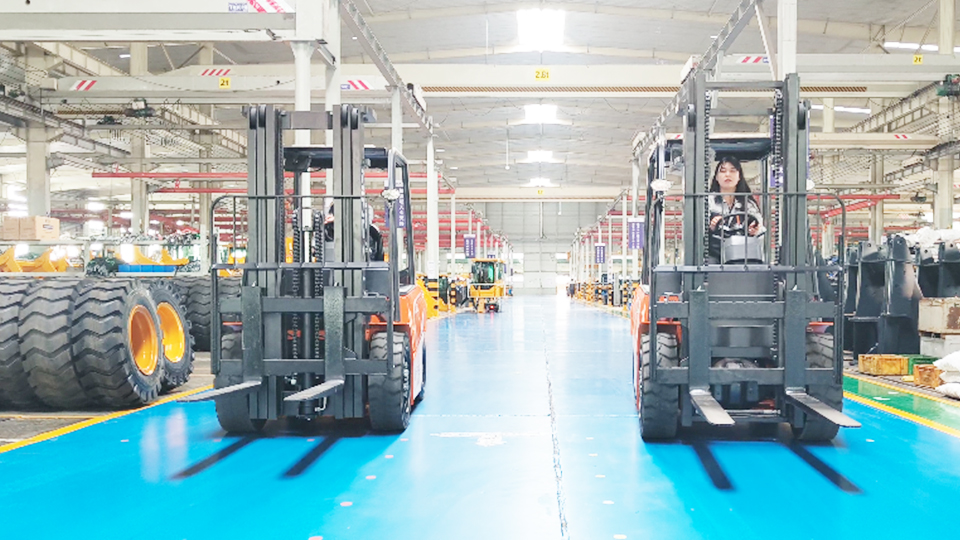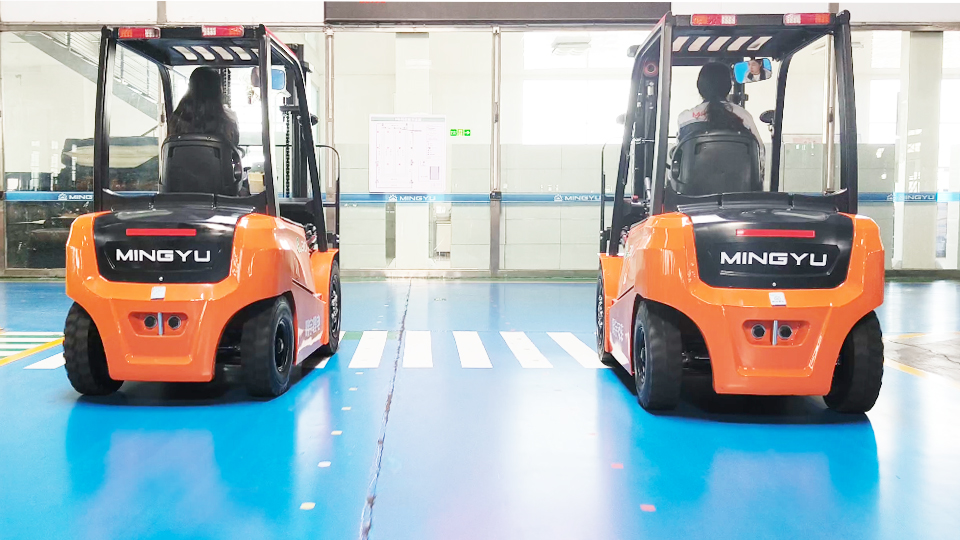
What Are Forklift Holes Called? Understanding Fork Pocket Terminology
Forklifts are essential for material handling in numerous industries, and their ability to safely lift and transport loads depends on the proper engagement of forks with the load. A crucial component in this process is the presence of openings within the load or pallet itself, designed to accommodate the forklift's tines. While often casually referred to as "forklift holes," the technical terminology is more precise and varied, depending on the context and the type of load being handled. This article delves into the diverse terminology surrounding these openings, exploring their design, function, and the industry-specific language used to describe them.
The Functional Necessity of Fork Pockets:
Fork pockets are integral to the safe and efficient operation of forklifts. They provide a standardized and secure method for lifting and transporting various loads, minimizing the risk of slippage, damage, or accidents.
Load Stability: Fork pockets ensure that the load is balanced and stable during transport, preventing it from shifting or falling.
Safe Handling: By providing designated entry points for the forklift's tines, fork pockets reduce the risk of damage to the load and the surrounding environment.
Efficient Operations: Fork pockets streamline material handling processes, allowing for quick and efficient loading and unloading.
Standardization: The use of standardized fork pocket dimensions and configurations facilitates interoperability between different forklifts and loads.

Terminology Variations: A Breakdown:
The terminology used to describe forklift openings varies depending on the industry, the type of load being handled, and regional differences. Here's a breakdown of the most common terms:
Fork Pockets:
This is perhaps the most widely used and generally accepted term.
It accurately describes the function of these openings as receptacles for the forklift's tines.
"Fork pockets" is commonly used in general material handling, warehousing, and logistics.
Fork Slots:
This term is often used interchangeably with "fork pockets."
It emphasizes the elongated nature of the openings, which are typically designed to accommodate the length of the forklift tines.
"Fork slots" are frequently found in steel fabrications, and specialized material handling items.
Tine Pockets:
This term is more specific, referring to the pockets that accommodate the tines of the forklift.
It is often used in technical documentation and engineering specifications.
Pallet Openings:
When referring to openings in pallets, particularly wooden pallets, the term "pallet openings" is commonly used.
These openings are designed to allow the forklift tines to enter and lift the pallet.
This is the common term used when refering to standard wooden pallets.
Handling Holes:
This term is more general and can refer to any openings designed for handling a load, including those used for forklifts.
It is often used in manufacturing and construction.
Access Holes:
This is another general term, used when describing holes that allow access for forklift tines.
This term could also be used to describe any holes that provide general access for any purpose.
Channel Slots:
This term is very specific, and used when describing the slots in steel channel, or other structural steel components.
This term is very common in the steel fabrication industry.
Box Pockets:
This term would be used when describing pockets built into the structure of a box, or other container.
This term is self explanatory, and used when describing the pockets on a container.
Design Considerations for Fork Pockets:
The design of fork pockets is crucial for ensuring safe and efficient material handling. Key considerations include:
Dimensions: The width and height of the fork pockets must be compatible with the dimensions of the forklift tines.
Spacing: The spacing between the fork pockets must be appropriate for the width of the forklift's fork carriage.
Strength and Durability: The fork pockets must be strong enough to withstand the weight of the load and the stresses of lifting and transporting.

Material: The material used to construct the fork pockets must be durable and resistant to wear and tear.
Accessibility: The fork pockets must be easily accessible to the forklift tines.
Reinforcement: Often, fork pockets are reinforced to prevent deformation or damage under heavy loads.
Industry-Specific Applications and Terminology:
The terminology and design of fork pockets can vary significantly across different industries:
Warehousing and Logistics: In warehousing and logistics, standardized pallet openings are essential for efficient material handling.
Construction: In construction, heavy-duty fork pockets are used to lift and transport materials such as steel beams, concrete blocks, and pipes.
Manufacturing: In manufacturing, custom-designed fork pockets are often used to handle specialized components and assemblies.
Steel Fabrication: In steel fabrication, "channel slots" or "fork slots" are common terms used to describe the openings in structural steel components.
Shipping and Container Handling: Shipping containers and specialized containers often have "box pockets" or similar reinforced openings.
Standards and Regulations:
Several standards and regulations govern the design and use of fork pockets, including:
ISO Standards: The International Organization for Standardization (ISO) publishes standards related to pallet dimensions and fork pocket design.
OSHA Regulations: The Occupational Safety and Health Administration (OSHA) sets safety standards for forklift operation and material handling.
National Standards: Various national standards organizations, such as ANSI (American National Standards Institute), also publish relevant standards.
Conclusion:
While the term "forklift holes" is commonly used in casual conversation, the technical terminology is more varied and precise. Terms such as "fork pockets," "fork slots," "tine pockets," and "pallet openings" are used to describe these openings, depending on the context and the type of load being handled. Understanding the different terms and design considerations is crucial for ensuring safe and efficient material handling operations. By adhering to industry standards and best practices, operators can minimize the risk of accidents and maximize productivity.
Name: selena
Mobile:+86-13176910558
Tel:+86-0535-2090977
Whatsapp:8613181602336
Email:vip@mingyuforklift.com
Add:Xiaqiu Town, Laizhou, Yantai City, Shandong Province, China